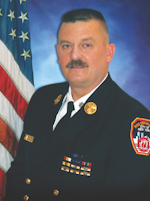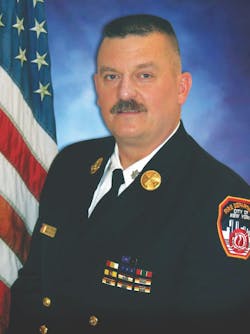If you look through any fire apparatus, you will find dozens of pieces of equipment and tools. Firefighters who work at a fire or emergency scene as well as in regard to the myriad other services that they provide and jobs that they work carry and use many tools. However, they use only a few tools at every incident and on every run. One of them is the radio. It’s an amazing and valuable tool and is important to everything that we do.
Direct control
When a battalion chief or other incident commander arrives on scene of an alarm, the first action that generally is taken is to reach for the radio and contact the company officer who is on scene. This first transmission notifies all units that are on scene that the chief arrived and is in command. This is an important step and sets the stage for the rest of the operation. Once the chief is on scene, just about every transmission will go to or through that individual. Once command is established via radio, the chief has direct and complete control over the efforts of the department.
Command presence
An important point to make about radio transmissions is that the chief is able to establish the necessary command presence via the manner by which directives, etc., are spoken on the radio.
Chiefs and other command officers should speak with a clear voice and with enough volume that they are heard easily by every firefighter. They should speak slowly enough that they are understood clearly and so that they don’t have to repeat any transmission. The language and vocabulary that they speak should be easily understandable and technically accurate. Without knowing who is speaking on the radio, any firefighter who is listening should know that it’s the chief.
The benefits of the radio-based command presence affect every aspect of the incident. Structural fires, serious vehicle accidents, large-scale utility emergencies and natural disasters all are run better and safer when the chief “owns the radio.”
Furthermore, when these incidents are conducted and concluded in an orderly and safe manner, not only does the department suffer fewer injuries and accidents, but citizens are rescued and treated more rapidly and their property is salvaged or saved much more frequently than otherwise.
Effect and influence
It’s amazing how a single person can manage large-scale emergency situations professionally and successfully by simply using the radio.
Chiefs can initiate or discontinue numerous operations at the emergency scene by simply speaking into the microphone. This doesn’t in any way reduce the importance of the efforts and actions of the working firefighters and officers but instead highlights the value and effectiveness of the radio. Yes, firefighters fought fires and handled all kinds of emergencies before we ever had radios, but radios’ use on the fireground results in much faster and safer and more successful operations.
Even when the chief isn’t involved in a specific conversation that’s playing out on the radio, such as when a truck officer communicates with the roof firefighter, the chief still is listening. In fact, the entire fireground is listening in on the primary tactical channel for the entire operation, and 30 or 40 working firefighters can be contacted immediately by the chief with the simple depressing of the transmit button on the radio.
Whether you are the single on-duty battalion chief in a department that has three firehouses or are one of more than 50 battalion chiefs in a city of millions of people, your effect, influence and chances of success rely almost exclusively on your knowledge and use of the fireground radio.

John J. Salka Jr. | Battalion Chief
JOHN J. SALKA JR., who is a Firehouse contributing editor, retired as a battalion chief with FDNY, serving as commander of the 18th battalion in the Bronx. Salka has instructed at several FDNY training programs, including the department’s Probationary Firefighters School, Captains Management Program and Battalion Chiefs Command Course. He conducts training programs at national and local conferences and has been recognized for his firefighter survival course, “Get Out Alive.” Salka co-authored the FDNY Engine Company Operations manual and wrote the book "First In, Last Out–Leadership Lessons From the New York Fire Department." He also operates Fire Command Training, which is a New York-based fire service training and consulting firm.






